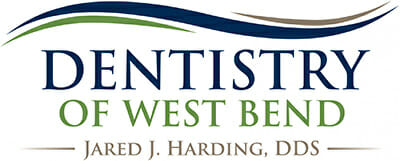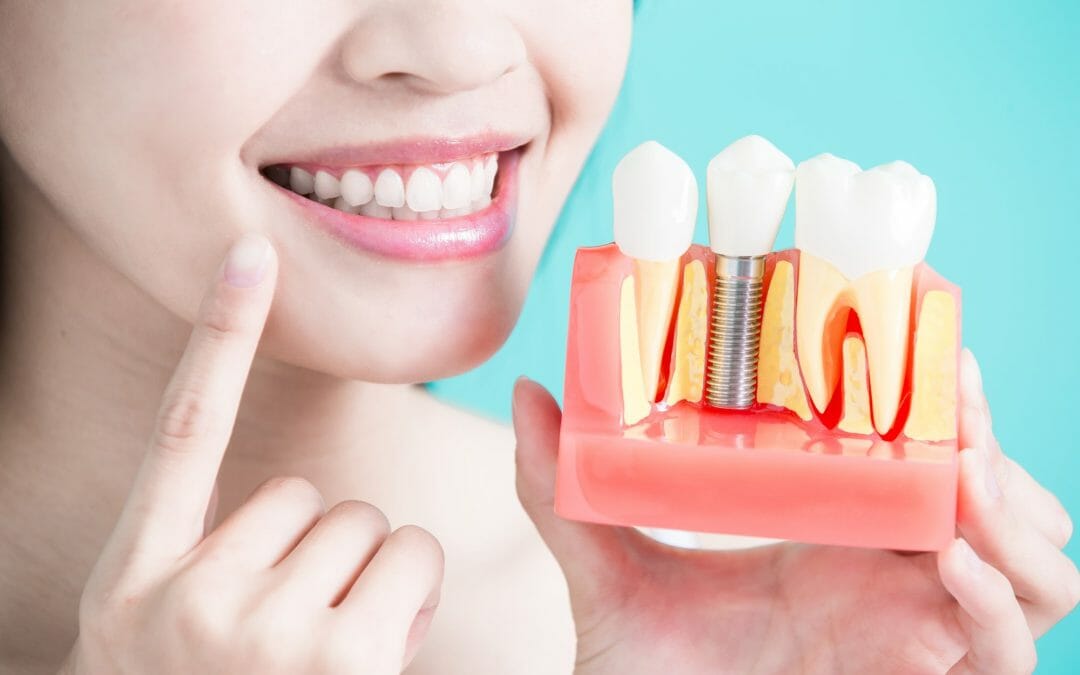If you are missing one or more teeth, then you understand the significant impact living with an incomplete smile can have on your life. Whether you have lost teeth as a result of age, injury, tooth decay, disease, or another reason, living with missing teeth changes your appearance, affects the way you speak, and can make it difficult to enjoy all of your favorite foods.
Thankfully, modern restorative dentistry offers several treatment solutions that are designed to restore a person’s smile by replacing their missing teeth.
What’s the Difference Between a Dental Bridge and Dental Implants?
Two popular tooth-replacement options include dental bridges and dental implants, but what’s the difference between these tooth-replacement options and how do you know which is right for you?
What Is a Dental Bridge?
A dental bridge is a type of custom-designed dental appliance that is designed to replace one or more consecutive missing teeth either in the middle or at the end of an arch of teeth. Bridges are designed to connect at either end and float above the gums of a gap of missing teeth to fill it in with replacements.
There are several different types of dental bridges that can be selected to meet a patient’s unique needs. These include:
- Traditional Bridge – A traditional bridge consists of two anchors that are made from dental crowns that are located at both ends of the floating pontic which is comprised of replacement teeth. The dental crown anchors are designed to fit over and attach to the natural teeth neighboring the gap.
- Maryland Bonded Bridge – A Maryland bonded bridge is similar to a traditional bridge, but rather than using dental crowns as anchors it uses metal braces and dental bonding to attach to the patient’s neighboring teeth.
- Cantilever Bridge – A cantilever bridge is designed with an anchor on only one end of the bridge and is designed to fill in a tooth gap at the end of a row of teeth.
What Are Dental Implants?
A dental implant is a custom-designed permanent tooth-replacement treatment option that is commonly used to restore one or more of a patient’s missing teeth. A dental implant is comprised of three separate parts:
- Implant Anchor – The implant anchor is a screw-like device that is made from biocompatible metal. It is surgically placed in the patient’s jawbone and, after a healing process of osseointegration, it fuses with the jawbone and mimics a natural tooth’s roots.
- Implant Abutment – The implant abutment is an attachment piece that connects the implant anchor to the patient’s permanent dental crown.
- Dental Crown – The permanent dental crown is the only visible portion of a dental implant, and it is designed to look, feel, and work just like the patient’s natural tooth.
Dental implants are an ideal tooth-replacement option because they are the most natural-looking, feeling, and functioning of all restorative dentistry options available today. In addition to looking and feeling natural, they also provide the jawbone with the stimulation that is essential to maintaining normal bone density and preventing the jawbone from deteriorating with time after losing a tooth.
The Best of Both Worlds With Implant-Supported Dental Bridges
In addition to being useful for replacing individual missing teeth, dental implants can also be used in a variety of ways to support other tooth-replacement dental appliances. For example, dental implants can be used to support a dental bridge, rather than using natural teeth. They can also be used to support special dentures called snap-on or overdentures.
These tooth replacement options provide patients with the benefits of dental implants but without the hassle of undergoing several dental implant procedures to replace multiple missing teeth on a one-for-one replacement basis.
Determining Which Tooth-Replacement Option Is Best for You
If you are missing one or several teeth, we can help you determine the best tooth replacement option for you. While dental implants offer many benefits over other restoration choices, they are not necessarily the right or best choice for every patient.
For example, dental implants require a lengthy placement and healing process which is not ideal for every patient. They also are not the best choice for patients who are currently living with periodontal disease. Candidates for dental implants also need to be healthy enough to undergo the placement procedure and willing to refrain from using tobacco throughout the recovery process.
Comprehensive Smile Restoration at Dentistry of West Bend
Dr. Harding at Dentistry of West Bend is highly experienced and our office is fully equipped to provide our patients with a variety of tooth-replacement treatment options in addition to dental bridges, dental implant consultations, and dental crowns. To learn more about replacing teeth to restore the form and function of your smile or to schedule a consultation, we welcome you to contact Dentistry of West Bend today.


Recent Comments